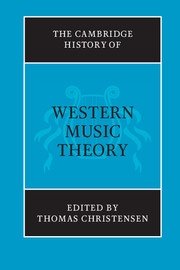Book contents
2 - Musica practica: music theory as pedagogy
from PART I - DISCIPLINING MUSIC THEORY
Published online by Cambridge University Press: 28 March 2008
Summary
One of the most consequential developments in the long history of music theory has been its gradual integration with the discipline of musica practica, a discipline that until at least the eighteenth century was considered largely distinct from the rarefied concerns of classical musica theorica. In the present chapter, we will attempt to look at some traditions of “practical” music theory in more detail. We will begin first with a brief discussion of the difficulties in defining “practical” theory and assessing its relation to functions of music pedagogy. We will then proceed to a broad survey of some of the major contributions to practical music instruction from the Middle Ages to the present day. Needless to say, this constitutes a vast quantity of writings that cannot be analyzed comprehensively here. But by focusing upon a few selected examples at historically significant moments, we hope to illustrate the principal parameters – structural, stylistic and institutional – which have together helped shape the discipline of “practical” music theory.
Praxis and pedagogy
The notions of “pedagogy” and “practice” have historically been closely linked, although they are by no means synonymous. In ancient Greece, the pedagogue was the “leader” or “teacher” of boys (usually the slave assigned to transport the boys from one schoolmaster to another). Today, the term “pedagogue” often carries with it negative connotations of pedantry and dogmatism, although in music, the term has perhaps a somewhat more benign association related to the teaching of basic skills. As pointed out in the Introduction to this volume, the origin of the dialectical juxtaposition of theory with practice may be traced to Aristotle (see p. 2).
- Type
- Chapter
- Information
- The Cambridge History of Western Music Theory , pp. 46 - 77Publisher: Cambridge University PressPrint publication year: 2002
References
- 5
- Cited by



